Domingos Joaquim da Silva, in 1821, commissioned the Architect Manuel Joaquim Norte Júnior (1878-1962) to design a building to serve as a wine cellar – the Visconde de Salreu Cellars.
In 1994, this building was acquired by António Bernardino Paulo da Silva.

Domingos Joaquim da Silva (1854-1936), originally from the parish of Salreu, in Estarreja, was an entrepreneur in Brazil and Portugal, having received the title of Viscount from King Carlos in 1907.
Given the fame of Colares wines, he invested in this region as a wine producer. In 1821, he commissioned the architect Manuel Joaquim Norte Júnior (1878-1962) to design a building with the functions of a wine cellar – the Visconde de Salreu Cellars –, whose construction was carried out by the contractors Santos & Santos, in 1823, in the big boy.
Located on the road that connects Colares to Praia das Maçãs and Azenhas do Mar, this building is very close to the Adega Regional de Colares.
With vernacular inspiration, the cellars present, in the central part of the façade, a beautiful tile panel with two figures wrapped in grape bunches, from Fábrica de Cerâmica Constância Lda. In the middle of this panel, there is a representation of a wooden wine barrel with the inscription “CAVES / VISCONDE DE SALREU / MCMXX”, on which a wreath and a coat of arms with crown are highlighted. Tile friezes decorate the building with motifs dedicated to the vineyard and the harvest.
With a rectangular floor plan, the building is spread over two and three floors that follow the slope of the land, the ground floor being the one with the highest ceiling height.
The building has two large arched doors in the center and two smaller ones at each end. Several sets of triple windows make up the facade. The tile roof has two waters.
Located next to the tram line, created in 1904, between Sintra and Praia das Maças, the building was equipped with an interior terminal for the unloading of wine barrels, such was the movement of production and commercialization of wines that did at the time.
The building had very good conditions at the time to store large amounts of wine in vats.

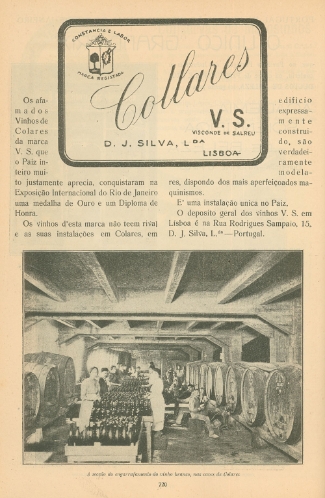
Colares wines from the Visconde de Salreu winery – Colares V. S. – were highly appreciated for their quality. They have received various awards at international exhibitions.
It is worth mentioning a Gold Medal and a Diploma of Honor achieved in 1923, within the scope of the International Exhibition in Rio de Janeiro, Brazil.
Later, in the 60s of the 20th century, the winery was equipped with large deposits that allowed the storage of about one million liters, such was the volume of exports to Brazil, Angola, Mozambique and other countries.
With very good conditions for storing large amounts of wine, with a configuration and organization adapted to its functions, the building is an important reference in this type of structure.

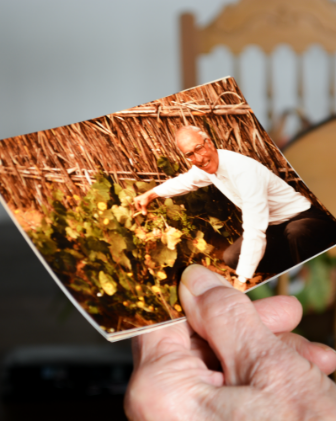
On July 7, 1994, the Visconde de Salreu Cellars were acquired by António Bernardino Paulo da Silva with the aim of safeguarding a building with a heritage character, associated with the memory and identity of the region.
Paulo da Silva started by storing wine in the large-capacity cement tanks that exist there and by making it available to other producers in the region.
On the occasion of the commemoration of the hundred years of Colares as a demarcated region, he collaborated with the Municipality of Sintra in providing this space for the organization of two exhibitions: “Alfredo Keil in Sintra 100 years later” (2007) and “100 years of the Demarcated Region of Necklaces – 1908/2008”.
Other projects are being considered for the future.


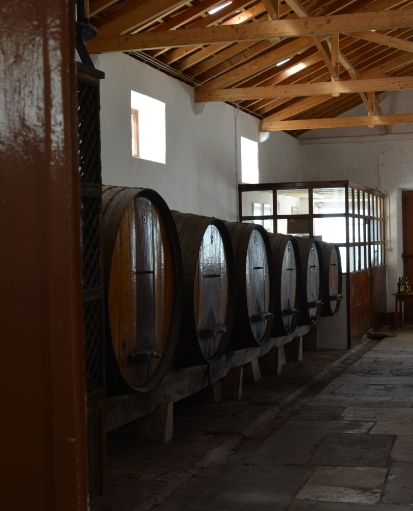
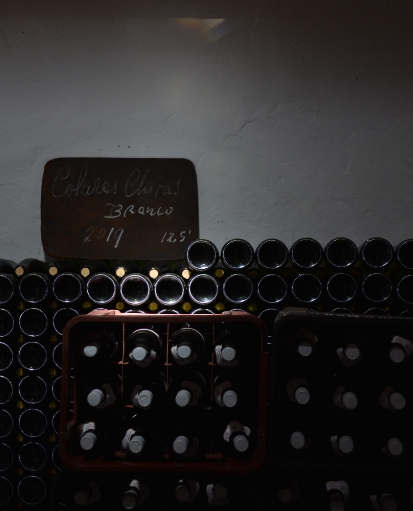
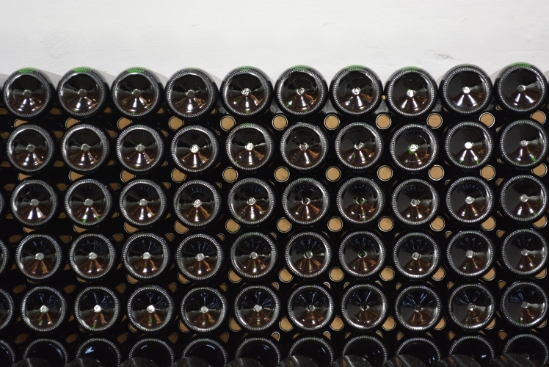



Domingos Joaquim da Silva, in 1821, commissioned the Architect Manuel Joaquim Norte Júnior (1878-1962) to design a building to serve as a wine cellar – the Visconde de Salreu Cellars.
In 1994, this building was acquired by António Bernardino Paulo da Silva.

Domingos Joaquim da Silva (1854-1936), originally from the parish of Salreu, in Estarreja, was an entrepreneur in Brazil and Portugal, having received the title of Viscount from King Carlos in 1907.
Given the fame of Colares wines, he invested in this region as a wine producer. In 1821, he commissioned the architect Manuel Joaquim Norte Júnior (1878-1962) to design a building with the functions of a wine cellar – the Visconde de Salreu Cellars –, whose construction was carried out by the contractors Santos & Santos, in 1823, in the big boy.
Located on the road that connects Colares to Praia das Maçãs and Azenhas do Mar, this building is very close to the Adega Regional de Colares.

With vernacular inspiration, the cellars present, in the central part of the façade, a beautiful tile panel with two figures wrapped in grape bunches, from Fábrica de Cerâmica Constância Lda. In the middle of this panel, there is a representation of a wooden wine barrel with the inscription “CAVES / VISCONDE DE SALREU / MCMXX”, on which a wreath and a coat of arms with crown are highlighted. Tile friezes decorate the building with motifs dedicated to the vineyard and the harvest.

With a rectangular floor plan, the building is spread over two and three floors that follow the slope of the land, the ground floor being the one with the highest ceiling height.
The building has two large arched doors in the center and two smaller ones at each end. Several sets of triple windows make up the facade. The tile roof has two waters.
Located next to the tram line, created in 1904, between Sintra and Praia das Maças, the building was equipped with an interior terminal for the unloading of wine barrels, such was the movement of production and commercialization of wines that did at the time.
The building had very good conditions at the time to store large amounts of wine in vats.

Colares wines from the Visconde de Salreu winery – Colares V. S. – were highly appreciated for their quality. They have received various awards at international exhibitions.
It is worth mentioning a Gold Medal and a Diploma of Honor achieved in 1923, within the scope of the International Exhibition in Rio de Janeiro, Brazil.
Located next to the tram line, created in 1904, between Sintra and Praia das Maças, the building was equipped with an interior terminal for the unloading of wine barrels, such was the movement of production and commercialization of wines that did at the time.
The building had very good conditions at the time to store large amounts of wine in barrels.
Later, in the 60s of the 20th century, the winery was equipped with large deposits that allowed the storage of about one million liters, such was the volume of exports to Brazil, Angola, Mozambique and other countries.
With very good conditions for storing large amounts of wine, with a configuration and organization adapted to its functions, the building is an important reference in this type of structure.

On July 7, 1994, the Visconde de Salreu Cellars were acquired by António Bernardino Paulo da Silva with the aim of safeguarding a building with a heritage character, associated with the memory and identity of the region.
Paulo da Silva started by storing wine in the large-capacity cement tanks that exist there and by making it available to other producers in the region.
On the occasion of the commemoration of the hundred years of Colares as a demarcated region, he collaborated with the Municipality of Sintra in providing this space for the organization of two exhibitions: “Alfredo Keil in Sintra 100 years later” (2007) and “100 years of the Demarcated Region of Necklaces – 1908/2008”.
Other projects are being considered for the future.
Located next to the tram line, created in 1904, between Sintra and Praia das Maças, the building was equipped with an interior terminal for the unloading of wine barrels, such was the movement of production and commercialization of wines that did at the time.
The building had very good conditions at the time to store large amounts of wine in barrels.


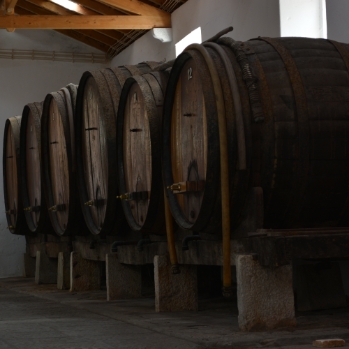
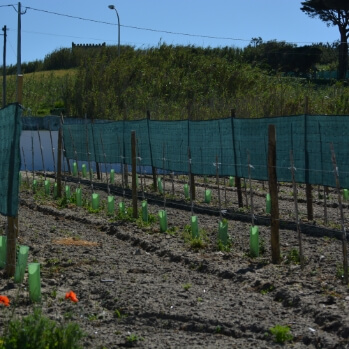

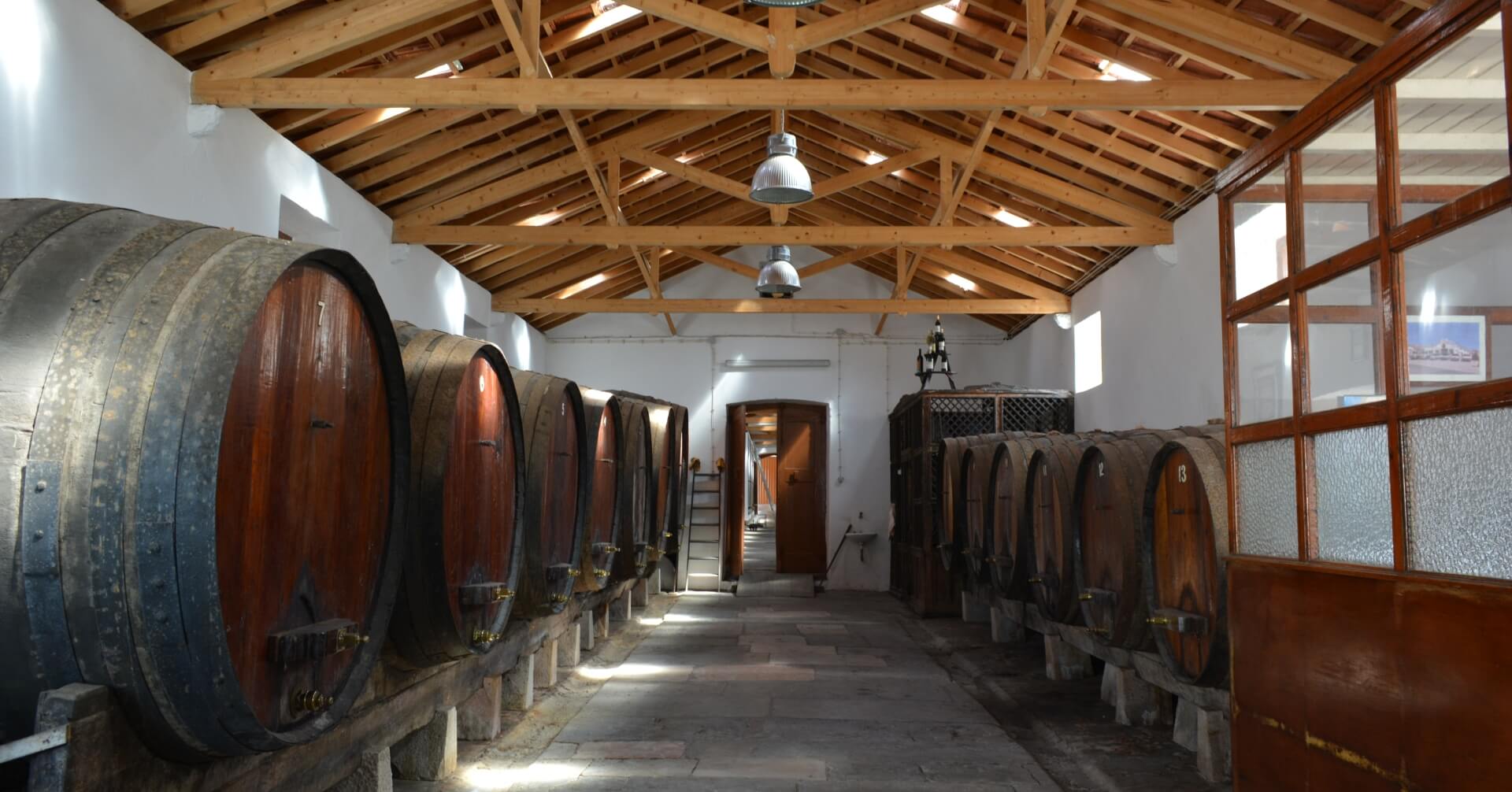

These chestnut and mahogany wooden barrels had belonged to the Casa de Ludgero Gomes, in Almoçageme, and had later been delivered to Tirol. They came to Adega Beira Mar in exchange for wine.
These barrels belonged to the winery of António Bernardino da Silva Chitas, grandfather of Paulo da Silva. They were received by their father through shares between the heirs and the Society.